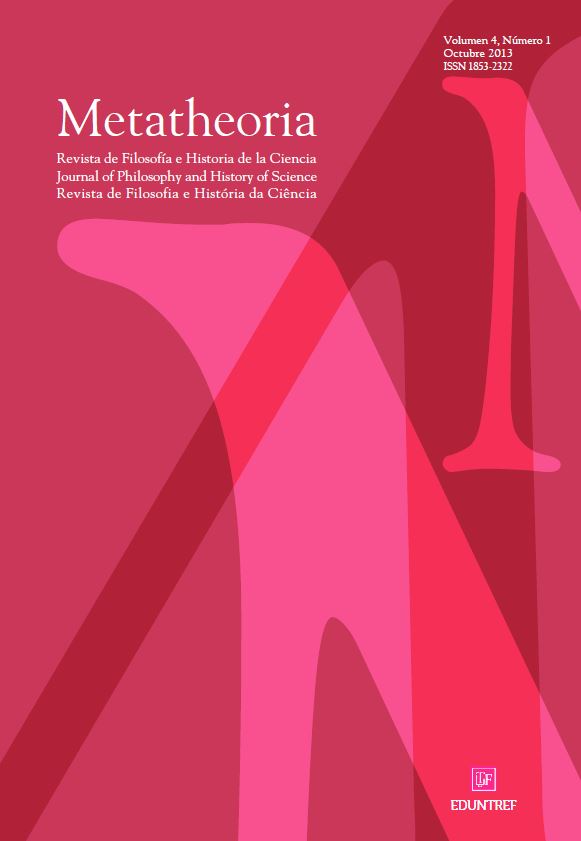The Filmic Image as a Modernist Apparatus. Cinematographic Devices in Historical Narrative
DOI:
https://doi.org/10.48160/18532330me4.112Palavras-chave:
Philosophy of HistoryResumo
Calling into question the idea of progress, as it has been done by contemporary approaches in philosophy of history and historical epistemology, entails accepting the impossibility of replacing it by another idea that puts forward a unified sense of history. The decline of metanarratives and of great emancipatory accounts requires a concept of representation that takes into consideration new ways in which human and social temporality appear and a new matrix that links past, present and future. The new notion of representation must also be attentive to new artistic interventions that, either from vanguardist or classic experiences, revisit the pairs “art/history” and “art/politics” by considering the potentialities of art, in general, and films, in particular, to compose narratives that are attuned to an experience of time marked by the crises of representationalism. For this reason, this paper starts by analyzing the crisis of progressive narratives, and its consequences for writing the past, in order to examine both the potentialities of cinematographic images for historical epistemology and the importance of Hayden White’s recent work about the ways to conceptualize contemporary historical experience.Referências
Aumont, J. (1997), El ojo interminable, Barcelona: Paidós. (French edition: L’oeil interminable: cinéma et peinture, Paris: Librairie Séguier, 1989.)
Auerbach, E. (2003), Mimesis. The Representation of Reality in Western Literature, New Jersey: Princeton University Press.
Barthes, R. (1964), “Rhétorique de l’image”, in Communications, nº 4, Recherches sémiologiques, Paris: Éditions du Seuil, pp. 40-51. (English edition: “Rhetoric of the Image”, in Barthes, R. (ed.), The Responsability of Forms, New York: Hill and Wang, 1985, pp. 21-40.)
Benjamin, W. (1969), “Theses on the Philosophy of History”, in Arendt, H. (ed.), Illumina-tions, New York: Schocken Books, pp. 253-264.
Berkhofer, R. (1995), Beyond the Great History. History as Text and Discourse, London: Har-vard University Press.
Bordwell, D. (1996), La narración en el cine de ficción, Barcelona: Paidós. (English edition: Narration in the Fiction Film, Madison: University of Wisconsin Press, 1985.)
Bremond, C. (1966), “La logique des possibles narratifs”, in Communications, nº8, L’analyse structurale du récit, Paris: Éditions du Seuil, pp. 60-67. (English edition: “The Logic of Narrative Possibilities”, New Literary History 11(3): 387-411, 1980.)
Butterfield, H. (1965), The Whig Interpretation of History, New York: W. W. Norton.
De Certeau, M. (1975),L’écriture de l’histoire, Paris: Gallimard.
De Mussy, L. and M. Valderrama (2010), Historiografía postmoderna. Conceptos, figuras, manifiestos, Santiago de Chile: RIL.
Jameson, F. (1981), The Political Unconscious, Ithaca: Cornell University Press.
Jenkins, K., Morgan, S. and A. Munslow (2007), “Introduction: On Fidelity and Diversity”, in Jenkins, K., Morgan, S. and A. Munslow (eds.), Manifestos for History, London: Rout-ledge, pp. 1-10.
Koselleck, R. (2001), Los estratos del tiempo. Estudios sobre la historia, Barcelona: Paidós. (German edition: Zeitschichten: Studien zur Historik, Frankfurt am Main: Suhrkamp, 2000.)
Mink, L. (1966), “The Autonomy of Historical Understanding”, History and Theory5: 24-47.
Rosenstone, R. (2007), “Space for the Bird to Fly”, in Jenkins, K., Morgan, S. and A. Munslow (eds.), Manifestos for History, London: Routledge, pp. 11-18.
Tozzi, V. (2003), “Introducción”, in White, H. (ed.), El texto histórico como artefacto literario, Barcelona: Paidós, pp. 9-42.
Tozzi, V. (2009), La historia según la nueva filosofía de la historia, Buenos Aires: Prometeo Libros.
Veyne, P. (1971),Comment on écrit l’histoire. Essai d’épistémologie, Paris: Editions du Seuil.
White, H. (1973), Metahistory: The Historical Imagination in Nineteenth-Century Europe, Baltimore: Johns Hopkins University Press.
White, H. (1988), “Historiography and Historiophoty”, The American Historical Review 93(5): 1193-1199.
White, H. (1992), “Historical Emplotment and the Problem of Truth in Historical Represen-tation”, in Friedlander, S. (ed.),Probing the Limits of Representation: Nazism and the “Final Solution”, Cambridge: Harvard University Press, pp. 37-53.
White, H. (1992a),El contenido de la forma. Narrativa, discurso y representación histórica, Buenos Aires: Paidós. (English edition: The Content of the Form: Narrative, Discourse and His-torical Representation, Baltimore: The Hopkins University Press, 1987.)
White, H. (1999), “The Modernist Event”, in White, H. (ed.),Figural Realism: Studies in the Mimesis Effect, Baltimore: Johns Hopkins University Press, pp. 66-86.
White, H. (2003), “Hecho y figuración en el discurso histórico”, in White, H. (ed.),El texto histórico como artefacto literario, Barcelona: Paidós, pp. 43-61.
White, H. (2007), “Manifesto Time”, in Jenkins, K., Morgan, S. and A. Munslow (eds.),Manifestos for History, London: Routledge, pp. 220-231.
Downloads
Publicado
Como Citar
Edição
Seção
Licença
Copyright (c) 2013 Metatheoria – Revista de Filosofia e História da CiênciaOs documentos publicados aqui são regidos pelos critérios de licenciamento Creative Commons Argentina.Atribución - No Comercial - Sin Obra Derivada 2.5





